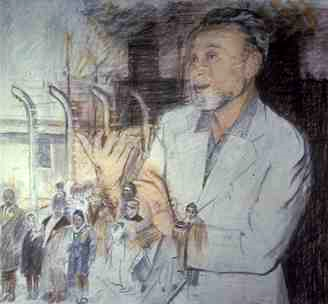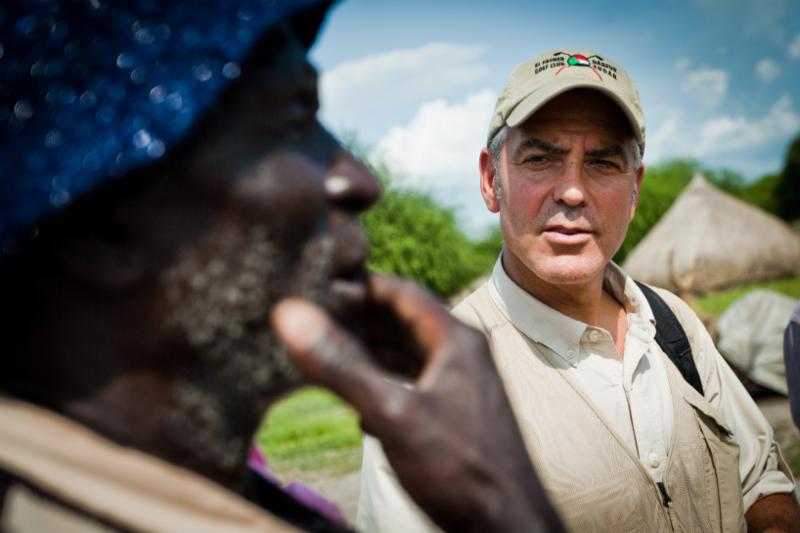 Dr. Günther Jikeli is a research fellow at the Moses Mendelssohn Center for European-Jewish Studies at Potsdam University. He is the co-director of the International Institute for Education and Research on Antisemitism (IIBSA). He earned his Ph.D.at the Center for Research on Antisemitism in Berlin and has served as an advisor to the Organization for Security and Co-operation in Europe on combating antisemitism. In 2013, he was awarded the Raoul Wallenberg Prize in Human Rights and Holocaust Studies by the International Raoul Wallenberg Foundation and Tel Aviv University.
Dr. Günther Jikeli is a research fellow at the Moses Mendelssohn Center for European-Jewish Studies at Potsdam University. He is the co-director of the International Institute for Education and Research on Antisemitism (IIBSA). He earned his Ph.D.at the Center for Research on Antisemitism in Berlin and has served as an advisor to the Organization for Security and Co-operation in Europe on combating antisemitism. In 2013, he was awarded the Raoul Wallenberg Prize in Human Rights and Holocaust Studies by the International Raoul Wallenberg Foundation and Tel Aviv University.
Recent reports indicate that antisemitism is on the rise in most European countries. How do you explain the causes?
Historically, antisemitism has often come in waves and we are now witnessing a global rise. This has multiple, overlapping causes. Holocaust memory is stirring resentment against Jews, while at the same time the Holocaust is being diminished and equated to all sorts of incidents. Additionally, many people in Western Europe have developed an obsession with Israel, encouraged by a media that disproportionately focus on the Israeli-Palestinian conflict and often disseminates a Manichean view upon it. A study from Germany showed that 90% of those who harbor hostile feelings against Israel also harbor anti-Semitic feelings. Another major factor for the rise of antisemitism in Western Europe is open hatred against Jews among large sections of Muslim minorities, which is all too often tolerated. In Eastern Europe, on the other hand, we can observe the rise of revisionist and ultra-nationalist parties, whose aim is to honor historical leaders of their country who fought against Stalinism. The problem with that is they were mostly Nazi collaborators and often directly responsible for the mass killings of Jews.
How do you distinguish between anti-Israel sentiment and antisemitism?
It depends what the “anti-Israel sentiment” is. If this is criticism of the Israeli government for a particular decision then there is a clear difference to antisemitism. If Jews, and only Jews, are denied a viable nation-state as a people, then it is hard not to see the bias. The dissolution of the State of Israel or a “one state solution” would seriously put all Jewish Israelis (and probably also Israeli Arabs) into danger. Willfully ignoring this threat can be seen as a form of assistance to anti-Semites.
Is the problem acknowledged by the institutions and the media?
No, it is usually ignored by the media. However, the wave of anti-Semitic incidents in summer 2014 in many European cities has led to strong condemnation by many political leaders and the media.
Is Germany facing similar problems? Is there more responsiveness to anti-Semitic manifestations?
There are no major differences in these questions between the authorities lets say in France and in Germany. The condemnation of antisemitism in all its forms is even stronger by French politicians. Manuel Valls, now French Prime Minister, has declared that anti-Zionism is antisemitism and should not be tolerated. No similar statement has come from leading German politicians (although, Chancellor Merkel should be praised for her firm stand on the issue). However, while antisemitism is condemned in general terms, the political will to combat it is effectively weak. In 2011 a German parliament commission on combating antisemitism recommended several actions that still have not been initiated and anti-Semitic Muslim groups are tolerated instead of condemned for their rhetoric.
Your scholarship focuses on antisemitism among individuals of Muslim background in Europe. What are the specific traits?
Muslim antisemitism is a major factor in the global rise of antisemitism we are witnessing today. It is estimated that in many European countries between 30 and 50% of perpetrators of violent anti-Semitic acts have a Muslim background (Muslims form less than 8% in any Western European country). Many anti-Semitic tropes that are popular among Muslims are also widespread amongst the general population, such as “Jews are rich”, “Jews control the media, the business world, etc…”In addition, many Muslims refer to Islamic scriptures and to a Muslim identity for their hatred of Jews. “Jews are Muslims’ enemies,” is a widespread belief among these Muslims. In some social circles, hatred of Jews has become the norm.
How do organizations like the International Institute for Education and Research on Antisemitism (IIBSA) combat antisemitism?
Combating antisemitism is important. Speaking out and not tolerating antisemitism- as well as encouraging people to act as anti-antisemites is of the upmost importance. Education is surely key and we find that younger people are often willing to reflect critically upon their prejudices (of which antisemitism is only one of many). Unfortunately, there are very few grassroots non-Jewish organizations that work in the field. There is the German association Heroes, which specializes in exploring prejudices and authoritarian structures within Muslim families and the IIBSA (with projects in Berlin, London, and Morocco) works both in research and education on these questions. Antisemitism at first targets Jews but what many people fail to realize is that it is also a threat to all democratic and civilized societies.
 In his acclaimed book Survival in Auschwitz, Primo Levi recounts a recurring dream he and other inmates had in the Nazi death camp: that he returned home to his family and told them about it, but nobody listened. “The person standing in front of me doesn’t stay to hear, turns around and goes away,” he writes.
In his acclaimed book Survival in Auschwitz, Primo Levi recounts a recurring dream he and other inmates had in the Nazi death camp: that he returned home to his family and told them about it, but nobody listened. “The person standing in front of me doesn’t stay to hear, turns around and goes away,” he writes.
 The Bloomsbury Companion to Holocaust Literature is a comprehensive reference resource including a wealth of critical material on a diverse range of topics within the literary study of Holocaust writing. At its centre is a series of specially commissioned essays by leading scholars within the field: these address genre-specific issues such as the question of biographical and historical truth in Holocaust testimony, as well as broader topics including the politics of Holocaust representation and the validity of comparative approaches to the Holocaust in literature and criticism.
The Bloomsbury Companion to Holocaust Literature is a comprehensive reference resource including a wealth of critical material on a diverse range of topics within the literary study of Holocaust writing. At its centre is a series of specially commissioned essays by leading scholars within the field: these address genre-specific issues such as the question of biographical and historical truth in Holocaust testimony, as well as broader topics including the politics of Holocaust representation and the validity of comparative approaches to the Holocaust in literature and criticism. When the National Football League’s Washington Redskins franchise traveled to the University’s TCF Stadium to play the Vikings, they brought with them a considerable amount of controversy. It has been difficult to avoid the debate surrounding the Washington team and their controversial moniker. This is not solely a Minnesota phenomenon; nearly all of the team’s away games have seen a significant amount of protest by both sides. The use of the redskin name has pitted advocates of a change to a more inclusive name against supporters of the football team and their more than eighty year history. While fans of the franchise argue that the name does not reflect any racism, it is important to understand the origins of the term redskin and how it fits into the wider context of the Native American genocide.
When the National Football League’s Washington Redskins franchise traveled to the University’s TCF Stadium to play the Vikings, they brought with them a considerable amount of controversy. It has been difficult to avoid the debate surrounding the Washington team and their controversial moniker. This is not solely a Minnesota phenomenon; nearly all of the team’s away games have seen a significant amount of protest by both sides. The use of the redskin name has pitted advocates of a change to a more inclusive name against supporters of the football team and their more than eighty year history. While fans of the franchise argue that the name does not reflect any racism, it is important to understand the origins of the term redskin and how it fits into the wider context of the Native American genocide.

 Antisemitism from Muslims has become a serious issue in Western Europe, although not often acknowledged as such. Looking for insights into the views and rationales of young Muslims toward Jews, Günther Jikeli and his colleagues interviewed 117 ordinary Muslim men in London (chiefly of South Asian background), Paris (chiefly North African), and Berlin (chiefly Turkish).
Antisemitism from Muslims has become a serious issue in Western Europe, although not often acknowledged as such. Looking for insights into the views and rationales of young Muslims toward Jews, Günther Jikeli and his colleagues interviewed 117 ordinary Muslim men in London (chiefly of South Asian background), Paris (chiefly North African), and Berlin (chiefly Turkish). Professor Vidal, who taught at the University of Minnesota from 1972 until his retirement in 2003, is widely known as an innovative, original, and productive scholar in the field of Latin American studies. The collective impact of his work and influence opened up new fields of intellectual inquiry to which he contributed through his high intellectual standards, independent spirit of inquiry, and unwavering commitment to human rights.
Professor Vidal, who taught at the University of Minnesota from 1972 until his retirement in 2003, is widely known as an innovative, original, and productive scholar in the field of Latin American studies. The collective impact of his work and influence opened up new fields of intellectual inquiry to which he contributed through his high intellectual standards, independent spirit of inquiry, and unwavering commitment to human rights. Dr. Günther Jikeli is a research fellow at the Moses Mendelssohn Center for European-Jewish Studies at Potsdam University. He is the co-director of the International Institute for Education and Research on Antisemitism (IIBSA). He earned his Ph.D.at the Center for Research on Antisemitism in Berlin and has served as an advisor to the Organization for Security and Co-operation in Europe on combating antisemitism. In 2013, he was awarded the Raoul Wallenberg Prize in Human Rights and Holocaust Studies by the International Raoul Wallenberg Foundation and Tel Aviv University.
Dr. Günther Jikeli is a research fellow at the Moses Mendelssohn Center for European-Jewish Studies at Potsdam University. He is the co-director of the International Institute for Education and Research on Antisemitism (IIBSA). He earned his Ph.D.at the Center for Research on Antisemitism in Berlin and has served as an advisor to the Organization for Security and Co-operation in Europe on combating antisemitism. In 2013, he was awarded the Raoul Wallenberg Prize in Human Rights and Holocaust Studies by the International Raoul Wallenberg Foundation and Tel Aviv University. 